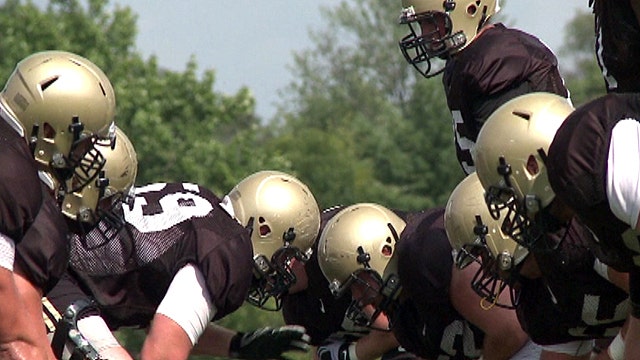What kind of brain injuries do football players experience?
Researchers study athletes at Purdue University
Purdue football players are used to being scrutinized on every drill – but now, they have more than just coaches watching them play.
Researchers from Purdue’s Neurotrauma Group have been watching the Purdue football team during practice, hoping to learn more about their game and what may happen in it.
“Our hope is that this will kind of be the first step, but eventually we’ll be able to kind of track the changes that happen from freshman year of high school all the way through senior year of college,” said Eric Nauman, a professor in the department of basic medical sciences and member of the Purdue Neurotrauma Group.
For years, Nauman has been measuring the impact football has on the brain, but this is the first year they’re teaming up with the Purdue football team. Through their observations, Nauman and his team are able to measure hits in real time thanks to new devices called accelerometers, which are placed in the players’ padding inside their helmets.
“It records the accelerations that they experience every time they take a hit,” Nauman explained.
A computer tracks the overall number and severity of hits the players experience, along with where they land on their heads. The researchers then compare that data with MRI brain scans of the players taken throughout the season, in order to see what kind of impact all those collisions might be having.
According to Nauman, the past five years of research on high school players have shown some significant changes.
“In the high school athletes, we saw that roughly 10 percent of them get concussions each year, but about half the players are showing changes in their neurophysiology that are worrisome for us,” Nauman said.
“All of the changes that we’re seeing that occur in the brain are related to the number of hits that the individual takes,” said Larry Leverenz, director of Purdue Athletic Training Education.
This season, the Purdue Neurotrauma Group is tracking even more hits, even attaching some sensors directly to players’ necks. They hope to learn something on the college field that will keep younger players safe.
"We think that when you come up here, and you get to work with players that are bigger, stronger, faster, possibly having better technique, that we'll see a different pattern of hits,” Nauman said.

